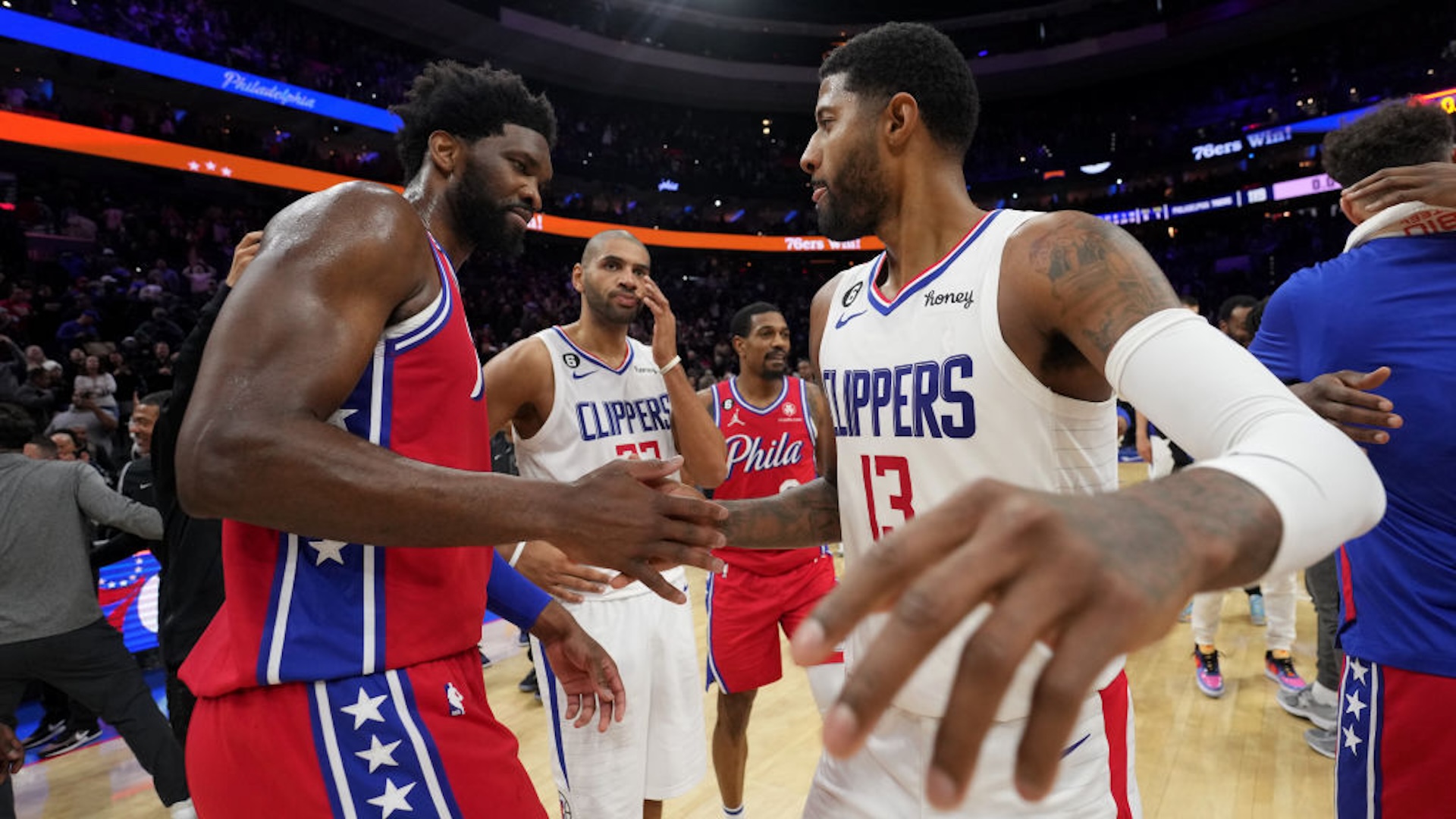The biggest signing of the NBA offseason happened while everyone was asleep. Hours before the sun rose on Monday, ESPN's Adrian Wojnarowski reported that Paul George is signing a four-year, $212 million deal with the Philadelphia 76ers. We now have another Big Three to talk about.
Adding George, one of the best wings of his generation and a nine-time all-star, to a starting five that already featured Tyrese Maxey and Joel Embiid could turn a very good team into a great one. It's a little hard to remember now, given that Philadelphia's most recent season ended in yet another early playoff exit, but the Sixers spent a decent chunk of the 2023–24 campaign looking like one of the best teams in the league. After being forced to trade James Harden for a grab bag of expiring contracts, the Sixers unleashed a deadly offense built around Maxey and Embiid's chemistry, which placed them at the top of the conference and set Embiid on a path toward another MVP award and one the best single-season offensive performance's in league history. Then Embiid got hurt, and the Sixers got crunched up by the Knicks in the first round, and so began yet another summer in which the Sixers needed to remake themselves on the fly.
As far as remaking processes go, this one is pretty ideal. The Sixers are acquiring George at no real cost, sliding him into the cap and roster space left behind by Tobias Harris, whose six seasons in Philly were an experiment in how inconsequential a guy making more than $30 million per year can be. Think back to how the Sixers looked at the end of January, imagine what that team might look like with Paul George in the mix, and you might just be able to convince yourself that the Celtics have something to worry about next season.
The Sixers are always good in January, though. The issues that have undone their previous, doomed attempts at advancing beyond the second round will not be fixed by George's arrival. In fact, those issues may end up being exacerbated. Most of the reporting around George's free agency indicated that he would have been happy to re-sign with the Clippers, but ultimately the Clips were not willing to commit as many years and dollars to him as the Sixers were. Late last night, the Clippers released a rather odd and long statement acknowledging that George would be leaving the team. It all but came out and said, Look, this guy is 34 years old and hurt all the time, and we don't want to be stuck paying him when he's 38 years old and hurt even more of the time. George played 263 regular-season games during his five seasons in Los Angeles.
What this means for the Sixers is that the Paul George era has the potential to go just as wrong as it does right, and the window for getting right is rather narrow. The Sixers now have a roster built around two superstars who are both carrying around significant injury histories and have more disappointing playoff performances on their résumés than they would probably like to admit. Embiid is 30 years old and getting creakier every year, and could opt out of his contract after the 2025–2026 season. This team doesn't have a season to waste. They need George integrated into the offense and performing at a high level immediately; they need Embiid and George healthy at the same time and playing well in the spring; they need this to work, goddammit.
A healthy Paul George offers the Sixers what might be the best shot they've had at making it work since Embiid was drafted. It's both fitting and somewhat cruel that he's only arrived now, when both he and the Sixers are just about out of time. Philadelphia spent all those years tanking and rebuilding and trying to cobble together a championship-caliber roster with the likes of Ben Simmons and Markelle Fultz and James Harden and Tobias Harris. Paul George spent five seasons on what was supposed to be the West's most deadly superteam, only to leave behind hardly any evidence that he was ever there. And now he and the Sixers are each other's last, best chance.






